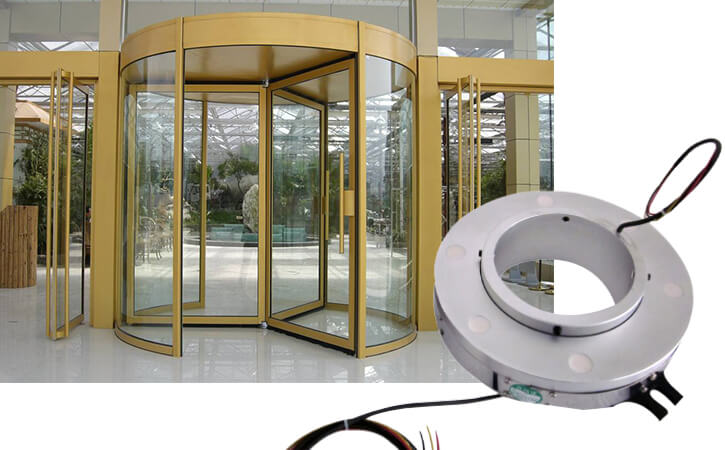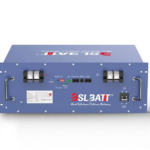In the world of electrical systems, slip ring connectors and capsule slip rings are essential components that enable the transmission of signals and power between rotating and stationary parts. These versatile devices have found applications in various industries, ranging from robotics and automation to wind turbines and medical equipment. In this article, we will explore the fundamentals, working principles, applications, and advancements in slip ring connectors and capsule slip rings, highlighting their significance in modern electrical systems.
Slip Ring Connectors: An Overview A slip ring connector, also known as a rotary electrical joint or rotary electrical interface, is a device that facilitates the transfer of electrical signals and power between a rotating part and a stationary part. It consists of two main components: the rotor and the stator. The rotor is attached to the rotating part, while the stator is connected to the stationary part. The two components are electrically connected through conductive rings and brushes, allowing for the seamless transfer of electrical signals or power.
Working Principles of Slip Ring Connectors
Slip ring connectors operate based on the principle of sliding electrical contacts. As the rotor component rotates along with the rotating part, the brushes on the stator maintain continuous contact with the conductive rings on the rotor. This contact enables the transmission of signals or power across the rotating interface without the need for cables or wires that may become tangled or damaged. Slip ring connectors are capable of handling various types of signals, including power, data, video, and more, making them highly versatile in different applications.
Applications of Slip Ring Connectors
Slip ring connectors find applications in numerous industries and systems where continuous rotation is required. Let’s explore some common applications:
Robotics and Automation: Slip ring connectors enable the transmission of power and control signals to robotic arms, rotating joints, and automated assembly lines, facilitating precise and continuous movements.
Wind Turbines: In wind turbines, slip ring connectors transfer power from the rotating blades to the stationary generator, ensuring a continuous flow of electricity and efficient energy production.
Packaging Machinery: Packaging machines often require rotating components such as rotary tables or film reels. Slip ring connectors allow the transfer of power and control signals to these components, ensuring smooth operation.
Medical Equipment: Slip ring connectors are utilized in medical imaging devices, such as CT scanners and MRI machines, to transmit signals between rotating components and stationary electronics, enabling accurate diagnostics and imaging.
Broadcast Systems: Slip ring connectors play a crucial role in broadcast systems, allowing cameras to rotate continuously while maintaining a seamless transmission of video signals, ensuring uninterrupted coverage.
Advancements in Slip Ring Connectors
Over time, slip ring connectors have seen advancements that enhance their performance and expand their capabilities. Some notable advancements include:
High-Speed Data Transmission: With the increasing demand for high-speed data transfer, slip ring connectors have evolved to support high-speed protocols such as Ethernet, USB, and HDMI, enabling the transmission of large data volumes across the rotating interface.
Fiber Optic Integration: Slip ring connectors can now integrate fiber optic cables alongside traditional electrical conductors, allowing the transmission of optical signals for applications that require high-bandwidth communication or immunity to electromagnetic interference.
Hybrid Configurations: Hybrid slip ring connectors combine power, signal, and fluid transfer capabilities within a single compact design. These configurations find applications in industries such as robotics, where power, data, and fluid control are required simultaneously.
Contact Materials and Coatings: Advancements in contact materials and coatings have improved the reliability and longevity of slip ring connectors, ensuring minimal wear, reduced friction, and enhanced resistance to corrosion and environmental factors.
Introduction to Capsule Slip Rings
Capsule slip rings, also known as pancake slip rings, are a specialized form of slip ring connectors. They are compact and self-contained electrical connectors that provide a reliable solution for transmitting signals and power in limited space applications. Capsule slip rings typically consist of an outer shell, a stator, a rotor, and brushes, similar to traditional slip ring connectors.
Advancements and Applications of Capsule Slip Rings
Capsule slip rings have witnessed significant advancements that have expanded their applications and improved their performance. Some notable advancements include:
Miniaturization: Capsule slip rings have become increasingly compact, allowing for installation in tight spaces and applications where traditional slip ring connectors may not be suitable.
Increased Channel Density: Advancements in miniaturization techniques have enabled capsule slip rings to accommodate a higher number of channels within a smaller form factor. This capability allows for the transmission of multiple signals or power lines simultaneously.
Integration with Other Technologies: Capsule slip rings can be integrated with other technologies, such as rotary joints, fiber optics, and RF connectors, providing a comprehensive solution for transmitting various types of signals across a rotating interface.
Durability and Environmental Protection: Modern capsule slip rings incorporate sealing and coating techniques to enhance their durability and protection against harsh operating conditions, including temperature variations, moisture, dust, and vibrations.
Capsule slip rings find applications in a wide range of industries and systems where space is limited, and continuous rotation is required. Some common applications include:
Robotics and Automation: Capsule slip ring enable the seamless transmission of power and control signals in compact robotic systems, allowing for precise and continuous movements.
UAVs and Drones: Capsule slip rings play a crucial role in transmitting signals between the rotating gimbal and the stationary controller in unmanned aerial vehicles and drones.
Medical Equipment: Compact and lightweight capsule slip rings are utilized in medical devices such as endoscopes, surgical robots, and imaging systems, facilitating rotational movement while ensuring reliable signal transmission.
Surveillance Systems: Capsule slip rings are employed in CCTV cameras, pan-tilt-zoom systems, and other surveillance equipment to enable continuous rotation and uninterrupted video transmission.
Aerospace and Defense: Capsule slip rings are utilized in radar systems, tracking antennas, and military equipment to transmit various signals and power lines reliably.
Slip ring connectors and capsule slip rings are critical components in modern electrical systems, enabling the seamless transmission of signals and power between rotating and stationary parts. Their versatility, advancements, and compact design make them indispensable in industries such as robotics, wind energy, medical equipment, broadcast systems, and more. By understanding their working principles, applications, and the continuous advancements in their design, engineers and designers can leverage the benefits of slip ring connectors and capsule slip rings to create more efficient and reliable electrical systems.








